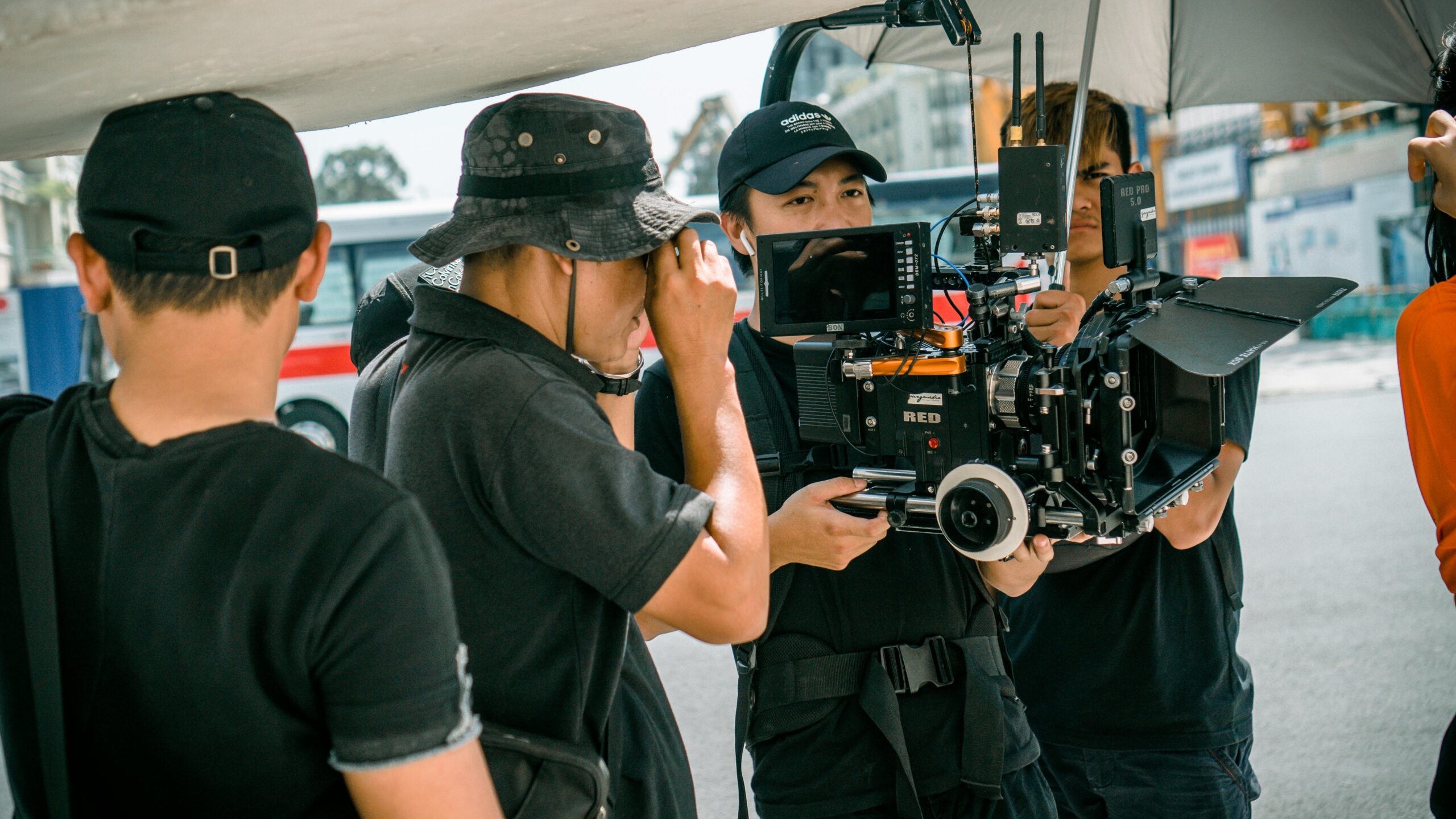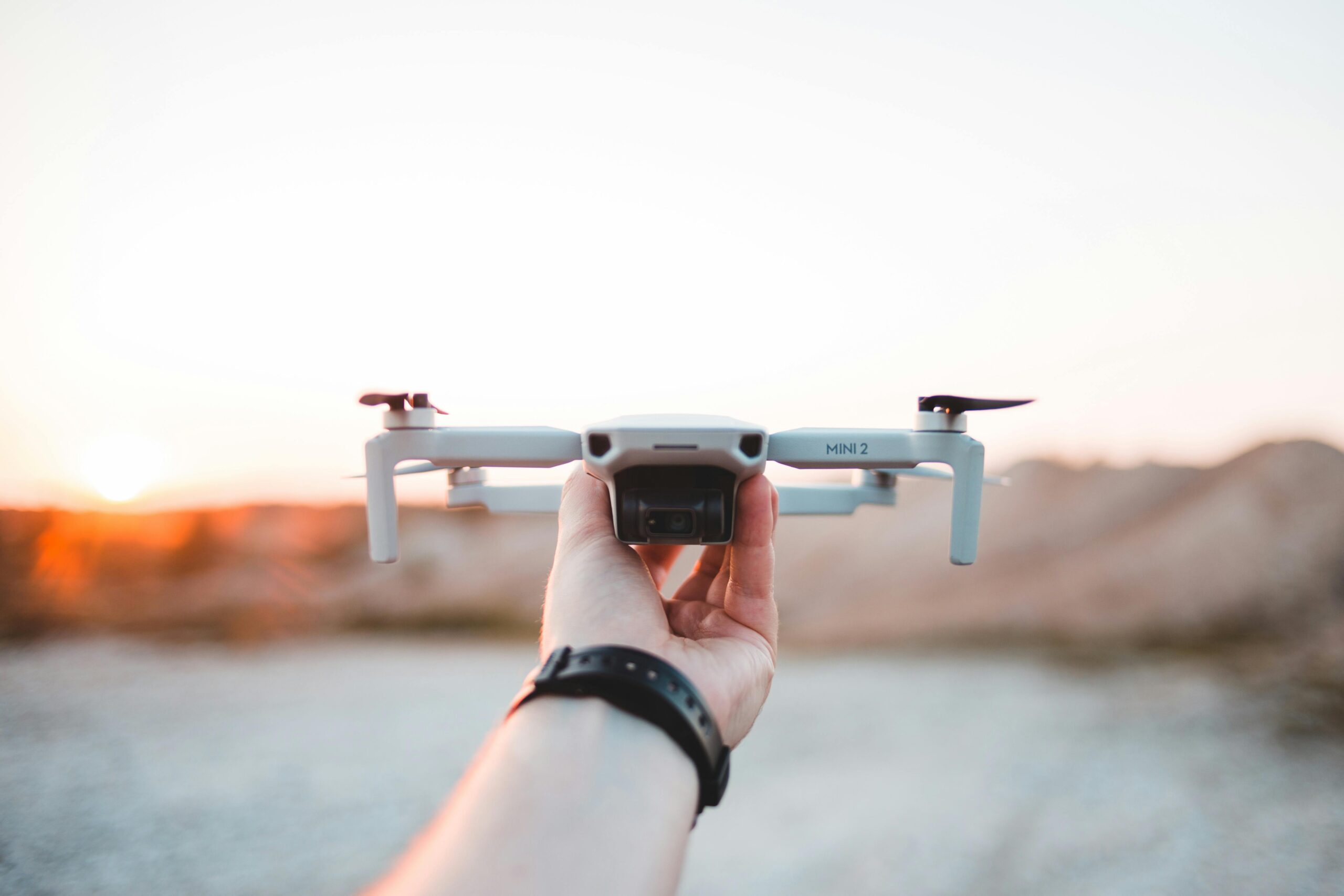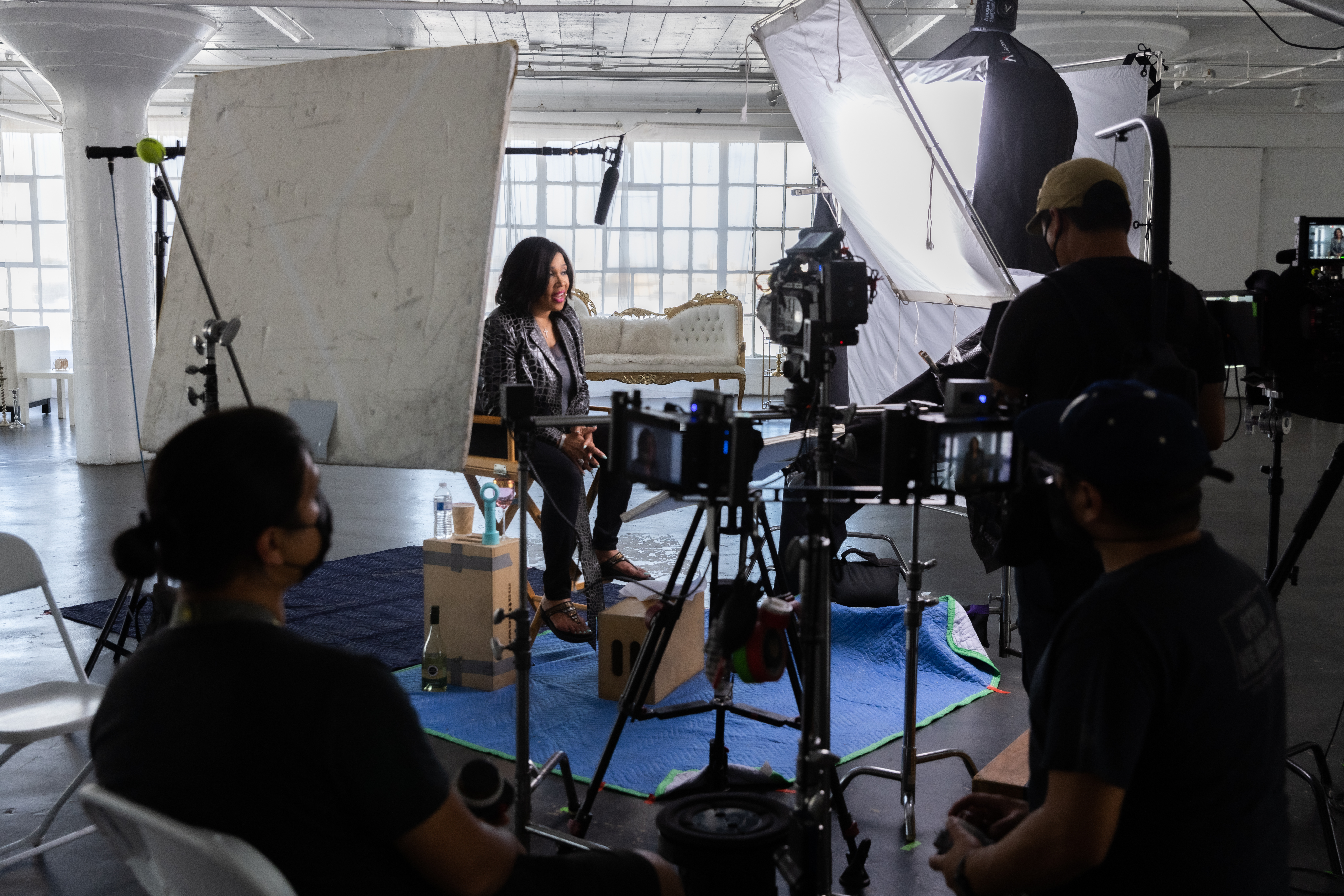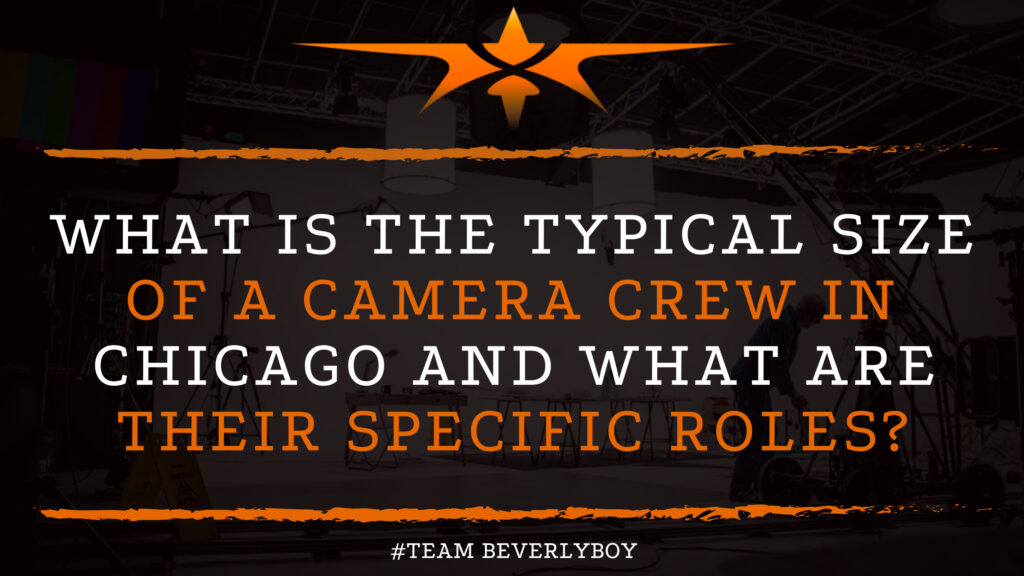What is the typical size of a camera crew in Chicago and what are their specific roles
Looking for a top notch Chicago Camera Crew? In the vibrant city of Chicago, where the skyline serves as a backdrop to a diverse range of film and video productions, the composition and size of your camera crew are critical factors that can significantly influence the quality and success of your project. From commercials shot in the bustling Loop to documentaries capturing the serene vistas alongside Lake Michigan, each project comes with its unique set of requirements. At Beverly Boy Productions, we understand these dynamics thoroughly and are equipped to guide you through assembling the ideal camera crew to bring your vision to life. Whether you’re a seasoned producer or a novice to the scene, knowing the typical size of a camera crew in Chicago and the specific roles involved is the first step towards a successful shoot. Our expertise in navigating the complexities of Chicago’s urban landscape ensures that we provide not only the manpower but also the skill set necessary for your production needs.

Chicago’s film industry is as dynamic as the city itself, demanding a flexible and knowledgeable camera crew capable of adapting to various environments and challenges. The size of the crew may vary dramatically based on factors such as the scale of the project, budget constraints, and specific location requirements—whether it’s capturing a fast-paced scene in Millennium Park or a detailed architectural feature on The Magnificent Mile. We specialize in customizing our crew to perfectly fit the scope of your project, ensuring efficiency and quality. By integrating our deep local knowledge with a network of seasoned professionals, we provide everything from compact agile teams for quick shoots to larger, comprehensive units for extensive productions, all while maintaining the creative vision and operational demands of our clients.
Overview of a Typical Camera Crew Size in Chicago
In Chicago, the size of a camera crew can vary greatly depending on the project’s scale and complexity. Typically, a small to medium-sized crew for a standard production might range from five to fifteen members. However, larger commercial shoots or feature films shot in iconic locations like Millennium Park or along The Magnificent Mile may require more extensive teams to manage the intricacies of such high-profile settings. Factors like the project’s duration, the variety of shots required, and the logistical challenges of shooting in a bustling cityscape play a pivotal role in determining the crew size. For further insights, check out our blog on video production budgeting.
Core Roles in a Chicago Camera Crew
Understanding the core roles within a camera crew is essential to effectively manage and execute a film project, especially in a city as cinematographically versatile as Chicago. Here’s an in-depth look at each key position:

- Director of Photography (DP): The DP, or cinematographer, is not just a camera operator but the artistic and technical leader who visualizes the script while managing the lighting, camera angles, and overall visual approach. In Chicago, where variable lighting conditions are influenced by both the urban setting and Lake Michigan, the DP’s expertise in achieving the right aesthetic under challenging conditions is invaluable.
- Camera Operator: Tasked with the hands-on operation of the camera, this role requires a keen eye for detail and a steady hand, especially when navigating the bustling streets of downtown Chicago or capturing dynamic scenes along the Chicago Riverwalk. Camera operators work closely with the DP to frame shots correctly and execute complex camera movements smoothly.
- Gaffer: The chief lighting technician, or gaffer, plays a crucial role in shaping the look and mood of the film through lighting design. In the fluctuating outdoor light of Chicago—from the bright midday sun reflected off skyscrapers to the subdued light of an overcast day in Grant Park—the gaffer’s ability to quickly adapt and modify lighting setups is essential for maintaining visual consistency.
- Sound Technician: Given the ambient noise inherent to a lively metropolis like Chicago, from overhead ‘L’ trains to bustling city crowds, the sound technician’s role is critical. They are responsible for capturing clear dialogue and authentic ambient sounds, employing various techniques to mitigate unwanted noise and enhance the auditory clarity of the production.
- Production Assistant (PA): Often the backbone of any production, PAs in Chicago handle a variety of logistical tasks to keep the shoot running smoothly. From managing schedules and equipment to navigating local filming regulations and securing locations like Navy Pier or Lincoln Park Zoo, their versatile support is key to a successful production day.
Each of these roles is vital for a production’s success, especially in a cityscape as complex as Chicago. At Beverly Boy Productions, we pride ourselves on assembling camera crews that are not only technically proficient but also creatively adaptive to meet and exceed the unique demands of each project.
Additional Roles Depending on the Project Scale

For larger or more complex productions in Chicago, additional specialized roles may become necessary:
- Drone Operator: Aerial shots of the Chicago River or the cityscape can add dramatic flair to any production, necessitating the expertise of a licensed drone operator.
- Steadicam Operator: Ideal for walking scenes or dynamic movements, especially useful in crowded places like Wrigley Field during a game day.
- Script Supervisor: Ensures continuity in storytelling, particularly important when shooting scenes out of sequence in various Chicago locations.
- Explore our comprehensive guide on advanced camera equipment for more details on what might be required for your next project.
How to Determine the Right Crew Size for Your Project
Choosing the appropriate crew size for your film or video project in Chicago is crucial for balancing efficiency and effectiveness. Here are some steps and considerations to help you make the best decision:

- Assess the Scope and Complexity of Your Project: Begin by evaluating the details of your project. What is the narrative or goal of the production? Are there multiple locations involved, such as both indoor venues like the Chicago Theatre and outdoor spots like the shores of Lake Michigan? The complexity of the scenes, number of locations, and the overall production value desired will heavily influence the size of the crew needed. For instance, a multi-day shoot across several iconic locations in Chicago will require a larger crew to manage logistics, equipment, and specialized roles effectively.
- Understand Venue Constraints: Each location in Chicago presents its unique challenges. For example, shooting in densely populated areas like Wrigley Field or Magnificent Mile may require additional security, crowd control, and possibly more production assistants to manage these aspects. Conversely, more controlled environments, such as private studios or designated filming areas like the Cinespace Chicago Film Studios, might allow for a leaner crew. Consider the physical space, lighting conditions, and audio challenges when deciding on crew size.
- Consult with Industry Experts: Leverage the knowledge of local production coordinators, location scouts, and other industry professionals who are familiar with the Chicago filmmaking landscape. These experts can provide valuable insights into the typical requirements for various types of productions in the city and recommend the optimal crew size based on their experiences.
- Factor in Budget and Resources: Your budget is a determining factor in how many crew members you can afford to hire. More extensive crews with specialized skills might be necessary for achieving a high production value but also come at a higher cost. It’s important to balance the artistic vision with financial constraints, utilizing resources such as Beverly Boy Productions to optimize your investment. We can help align your budget with your crew needs, ensuring that every dollar spent enhances your production quality without wasteful overspending.
- Consider Post-Production Needs: The size and composition of your crew on-location in Chicago might also be influenced by your post-production plans. For example, if extensive special effects or sound design will be added later, ensure that your on-site crew includes professionals who can capture the necessary raw footage and sound quality required for post-production enhancements.
- Plan for Contingencies: Always prepare for unexpected changes in weather, talent availability, or other logistical issues, especially in a city as dynamic as Chicago. Having a flexible crew size or additional support on standby can help you adapt to these changes without compromising the production schedule or quality.
By thoroughly considering these factors, you can determine the right crew size that not only fits the specific demands of your project in Chicago but also maximizes your production’s potential for success. At Beverly Boy Productions, we pride ourselves on our ability to tailor our services to meet the unique needs of each client, ensuring that every project we undertake is equipped with the perfect blend of talent and technical expertise.
Conclusion

Understanding what is the typical size of a camera crew in Chicago, and what are their specific roles? is crucial for anyone involved in the local film and video production industry. By assembling a crew that aligns with the specific needs of your project and the challenges of the Chicago setting, you’ll be well-prepared to capture your vision effectively. For personalized advice on assembling your Chicago camera crew, or to explore other resources, don’t hesitate to contact us. Let’s make your next Chicago shoot a resounding success!


